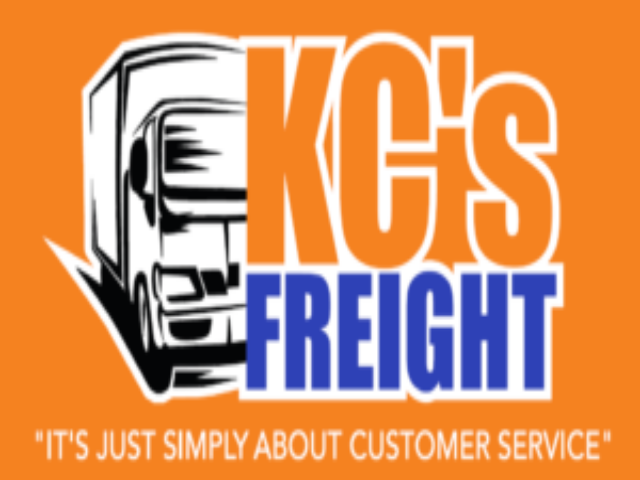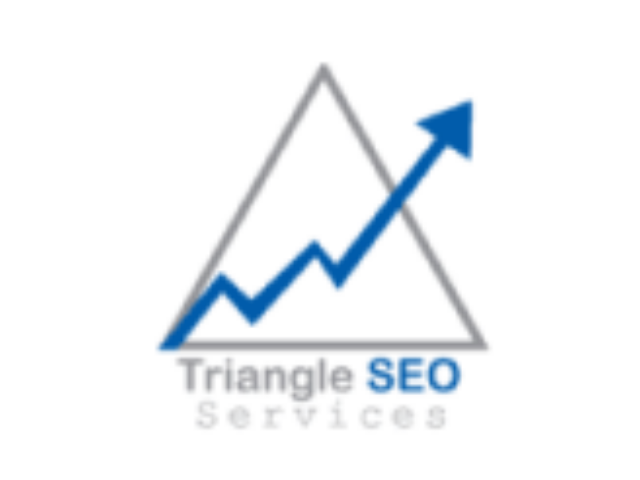
Enterprise ecommerce has become the backbone of modern retail, with online shopping experiencing unprecedented growth in recent years. As businesses scale and customer expectations evolve, having a robust digital infrastructure isn’t just an advantage—it’s essential for survival. We’ve witnessed firsthand how the right ecommerce platform can transform large-scale operations, enabling companies to handle massive product catalogs, peak traffic demands, and complex integrations seamlessly.
But here’s the challenge: building an enterprise-level online store requires more than just picking a platform off the shelf. It demands careful consideration of architecture, scalability, and integration capabilities with existing systems like ERP and CRM. Whether you’re exploring Open SaaS models, full-stack solutions, or composable architectures, the decisions you make today will impact your business’s ability to adapt and grow tomorrow.
Get into contact with us
If your interested in working with us contact us below and our friendly team will be in contact to organize a customized proposal.
What our clients are saying
Helping drive results for our clients of all sizes






What Is Enterprise Ecommerce Development?
Enterprise ecommerce development creates comprehensive digital commerce solutions specifically designed for large-scale businesses with complex operational requirements. We build these platforms to handle extensive product catalogs, high-volume transactions, and sophisticated integrations while maintaining optimal performance and security.
Key Differences from Traditional Ecommerce
Enterprise ecommerce platforms differ fundamentally from traditional solutions in scale, complexity, and capabilities. Large corporations require systems that process thousands of concurrent transactions, manage inventories exceeding 100,000 SKUs, and integrate seamlessly with existing enterprise infrastructure.
Scale and Performance Differences:
| Feature | Enterprise Ecommerce | Traditional Ecommerce |
|---|---|---|
| Daily Transactions | 10,000+ orders | Under 1,000 orders |
| Product Catalog Size | 50,000+ SKUs | Under 10,000 SKUs |
| Concurrent Users | 5,000+ simultaneous | Under 500 simultaneous |
| System Integrations | 10+ enterprise systems | 2-3 basic integrations |
| Infrastructure Cost | $100,000+ annually | Under $10,000 annually |
Enterprise platforms feature advanced customization options that traditional systems lack. We implement custom workflows for approval processes, dynamic pricing rules based on customer segments, and sophisticated inventory management across multiple warehouses and channels.
Security requirements also differentiate enterprise solutions. Large businesses demand PCI-DSS Level 1 compliance, advanced fraud detection systems, and role-based access controls for hundreds of internal users across departments.
Core Components of Enterprise Solutions
Enterprise ecommerce platforms comprise several integrated components that work together to create a unified commerce experience. Each component serves specific business functions while maintaining seamless data flow across the entire system.
Essential Platform Components:
- Product Information Management (PIM): Centralizes product data across channels, managing complex attributes, variants, and relationships for catalogs with 50,000+ items
- Order Management System (OMS): Orchestrates order processing from placement through fulfillment, handling split shipments, backorders, and returns across multiple locations
- Customer Relationship Management (CRM): Tracks customer interactions, purchase history, and preferences to enable personalized experiences and targeted marketing campaigns
- Enterprise Resource Planning (ERP) Integration: Synchronizes inventory levels, pricing, and financial data in real-time between commerce and back-office systems
- Business Intelligence and Analytics: Provides real-time dashboards and reporting on sales performance, customer behavior, and operational metrics
- Content Management System (CMS): Manages dynamic content, landing pages, and marketing campaigns without requiring developer intervention
- API Management Layer: Facilitates connections between internal systems and third-party services through secure, scalable APIs
These components operate on robust infrastructure designed for 99.9% uptime. We architect systems using microservices approaches, enabling independent scaling of specific functions based on demand. Load balancers distribute traffic across multiple servers, while CDN integration ensures fast page loads globally.
Advanced features distinguish enterprise platforms from standard solutions. Multi-channel capabilities synchronize inventory and orders across web, mobile, marketplaces, and physical stores. B2B functionality includes customer-specific pricing, bulk ordering, and quote management. International commerce features support multiple currencies, languages, and tax regulations across different regions.
Benefits of Enterprise Ecommerce Development
Enterprise ecommerce development delivers transformative advantages that extend beyond basic online selling capabilities. We’ve identified three critical benefits that drive measurable business outcomes for organizations investing in comprehensive digital commerce solutions.
Scalability and Growth Potential
Enterprise ecommerce platforms accommodate exponential growth through elastic infrastructure that scales with business demands. These systems handle 10,000+ concurrent users during peak periods and process millions in transaction volumes without performance degradation. Cloud-based architectures automatically adjust server resources based on traffic patterns, ensuring consistent page load times under 2 seconds even during promotional events.
Multi-region deployment capabilities enable geographic expansion across 50+ countries with localized content, currencies, and payment methods. Enterprises leverage microservices architecture to add new features independently without disrupting core operations. For example, adding a subscription service module or marketplace functionality requires minimal development time compared to traditional monolithic platforms.
The platforms support unlimited product catalogs, with businesses managing 500,000+ SKUs efficiently through automated categorization and bulk import tools. Advanced caching mechanisms and content delivery networks (CDNs) maintain sub-second response times regardless of catalog size. Integration capabilities expand through RESTful APIs that connect with 100+ third-party services including logistics providers, marketing automation tools, and analytics platforms.
Enhanced Operational Efficiency
Enterprise ecommerce development streamlines operations by automating 70% of routine tasks through intelligent workflows. Order processing automation reduces manual intervention from 15 minutes to 30 seconds per order through integrated fulfillment systems. Real-time inventory synchronization across multiple warehouses prevents overselling and maintains high stock accuracy.
Centralized product information management (PIM) systems eliminate data silos by consolidating product details, pricing, and digital assets in one location. Marketing teams update product information once, and changes propagate across all sales channels within minutes. Customer service representatives access complete order histories, reducing average resolution time.
Integration with enterprise resource planning (ERP) systems automates financial reconciliation, eliminating hours of manual bookkeeping per week. Automated tax calculation engines handle complex multi-jurisdictional requirements, processing rates for numerois tax jurisdictions.
Advanced Personalization Capabilities
Enterprise platforms deliver individualized experiences through machine learning algorithms that analyze millions of customer interactions. Personalization engines increase conversion rates through dynamic product recommendations based on browsing history, purchase patterns, and demographic data. A/B testing frameworks enable simultaneous testing of 50+ variations to optimize user experiences continuously.
Customer segmentation tools create micro-segments based on 200+ behavioral and transactional attributes. Marketing teams deliver targeted campaigns to segments as small as 100 customers with personalized messaging and offers. Dynamic pricing algorithms adjust prices in real-time based on inventory levels, competitor pricing, and customer lifetime value.
AI-powered chatbots handle routine customer inquiries, providing instant responses in multiple languages. Natural language processing enables conversational commerce experiences where customers complete purchases through chat interfaces. Predictive search functionality anticipates customer needs, displaying relevant products after typing just 2-3 characters.
Essential Features for Enterprise Ecommerce Platforms
Enterprise ecommerce platforms require sophisticated features that go beyond basic online selling capabilities. We’ve identified the critical components that distinguish enterprise-grade solutions from standard ecommerce platforms.
Security and Compliance Requirements
Enterprise platforms demand comprehensive security infrastructure to protect sensitive customer data and maintain regulatory compliance. SSL certificates, data encryption, and PCI-DSS Level 1 compliance form the foundation of enterprise security protocols. According to industry data, 43% of cyberattacks target businesses, making robust security measures essential for protecting operations.
Advanced security features include:
- Multi-factor authentication for administrative access
- Real-time fraud detection systems
- Customizable encryption settings for different data types
- Regular security audits and vulnerability scanning
- Role-based access controls with granular permissions
Compliance frameworks extend beyond payment security. Enterprise platforms integrate GDPR compliance tools, HIPAA-ready infrastructure for healthcare organizations, and SOC 2 certification capabilities. Data governance frameworks ensure automated compliance reporting and audit trails for every transaction and system modification.
Integration with Business Systems
Seamless integration with existing enterprise infrastructure drives operational efficiency and eliminates data silos. Modern enterprise ecommerce platforms connect with ERP systems, CRM platforms, warehouse management software, and financial reconciliation tools through robust API architectures.
Key integration capabilities include:
- Bi-directional data synchronization between systems
- Real-time inventory updates across multiple warehouses
- Automated order routing to fulfillment centers
- Customer data unification across touchpoints
- Financial data reconciliation with accounting systems
Enterprise platforms utilize middleware solutions and integration platform as a service (iPaaS) technologies to connect disparate systems. These integrations automate routine processes such as order management, inventory tracking, and customer relationship management. API-first architectures enable custom integrations with proprietary systems, supporting unique business workflows and legacy infrastructure.
Omnichannel Commerce Capabilities
Today’s enterprise customers interact across multiple channels, requiring unified commerce experiences that seamlessly connect online stores, mobile apps, physical locations, and B2B portals. Enterprise platforms orchestrate these touchpoints through centralized inventory management, consistent pricing rules, and unified customer profiles.
Omnichannel features encompass:
- Unified product catalogs across all channels
- Cross-channel inventory visibility and allocation
- Buy online, pick up in-store (BOPIS) functionality
- Ship-from-store capabilities
- Consistent promotions and pricing across touchpoints
Advanced personalization engines leverage customer data from all channels to deliver tailored experiences. AI-driven recommendation systems analyze purchase history, browsing behavior, and demographic data to present relevant products and content. Dynamic pricing algorithms adjust offers based on customer segments, purchase frequency, and lifetime value metrics.
Mobile-responsive design and Progressive Web App (PWA) capabilities ensure optimal experiences across devices. Enterprise platforms support native mobile applications through headless commerce architectures, enabling businesses to deliver app-specific features while maintaining centralized commerce logic.
Types of Enterprise Ecommerce Solutions
Enterprise ecommerce solutions come in various architectures and deployment models, each offering distinct advantages for different business requirements. Understanding these options helps organizations select the platform that aligns with their technical capabilities, budget constraints, and long-term growth strategies.
SaaS vs. PaaS vs. On-Premise Platforms
Software as a Service (SaaS) platforms dominate the enterprise ecommerce landscape with their cloud-based architecture and subscription pricing model. These solutions deploy in 4-6 weeks and include automatic updates, built-in security patches, and 99.9% uptime guarantees. Popular SaaS platforms like Shopify Plus and BigCommerce Enterprise handle 10,000+ transactions per minute without requiring internal IT infrastructure.
Platform as a Service (PaaS) solutions provide greater customization flexibility while maintaining cloud benefits. Organizations gain access to development frameworks, databases, and runtime environments to build custom applications. PaaS options reduce infrastructure costs by 30-40% compared to on-premise solutions while offering API-first architectures for seamless integrations.
On-premise platforms deliver complete control over data, customization, and security protocols. Large enterprises processing 1 million+ orders annually often choose on-premise solutions for their ability to handle complex B2B workflows and custom integrations. These platforms require dedicated IT teams and initial investments ranging from $500,000 to $2 million but eliminate vendor lock-in and recurring subscription fees.
Key differentiators between deployment models include:
- Implementation timeframe: SaaS (4-6 weeks), PaaS (2-4 months), On-premise (6-12 months)
- Customization capabilities: SaaS (limited), PaaS (moderate), On-premise (unlimited)
- Maintenance responsibility: SaaS (vendor-managed), PaaS (shared), On-premise (self-managed)
Headless and Composable Commerce Approaches
Headless commerce decouples the frontend presentation layer from backend commerce functionality through APIs. This architecture enables businesses to deliver content across 15+ channels simultaneously while maintaining a single source of truth for inventory and pricing. Organizations using headless solutions report faster page load times and can achieve higher conversion rates through optimized frontend experiences.
Composable commerce extends the headless concept by breaking down the entire commerce stack into modular components called Packaged Business Capabilities (PBCs). Each PBC handles specific functions:
- Cart management processes 50,000+ concurrent sessions
- Payment processing supports 100+ payment methods globally
- Search functionality delivers results in under 200 milliseconds
- Promotion engines manage 10,000+ concurrent discount rules
Enterprise brands implementing composable architectures achieve 3x faster feature deployment and 60% reduction in technical debt. The modular approach allows replacing individual components without disrupting the entire system, ensuring continuous innovation and competitive advantage.
API-first architectures power both headless and composable approaches, enabling:
- Real-time inventory synchronization across 500+ locations
- Dynamic pricing updates every 15 minutes
- Personalized content delivery to 1 million+ unique visitors daily
- Integration with 50+ third-party services simultaneously
Organizations transitioning to headless or composable architectures experience initial complexity but gain long-term benefits including vendor independence, unlimited scalability, and future-proof technology stacks that adapt to emerging channels and customer expectations.
Building Your Enterprise Ecommerce Strategy
Creating a comprehensive enterprise ecommerce strategy forms the foundation for successful digital transformation. Strategic planning ensures your platform aligns with business objectives, integrates seamlessly with existing systems, and scales effectively as your organization grows.
Identifying Business Requirements
Enterprise ecommerce development begins with documenting specific business requirements across all departments. Organizations typically identify 15-20 core requirements spanning technical infrastructure, operational workflows, and customer experience elements.
Key requirement categories include:
- Technical specifications: API requirements, data processing volumes (10,000+ daily transactions), server response times under 2 seconds
- Integration needs: ERP connections, CRM synchronization, warehouse management systems, payment gateways
- Security standards: PCI-DSS compliance levels, data encryption protocols, authentication methods
- Performance benchmarks: Page load speeds, concurrent user capacity (5,000+ simultaneous users), uptime guarantees (99.9%)
- Functionality requirements: B2B features, multi-currency support, inventory management for 50,000+ SKUs
Mapping these requirements involves cross-functional teams from IT, operations, marketing, and finance. Each department contributes unique insights about workflow automation needs, reporting requirements, and user access controls. Companies achieving successful enterprise implementations spend 4-6 weeks in this discovery phase, creating detailed requirement documents that guide platform selection and customization decisions.
Selecting the Right Platform
Platform selection determines the long-term success of your enterprise ecommerce initiative. Organizations evaluate platforms based on architecture flexibility, total cost of ownership, and alignment with identified business requirements.
Critical selection criteria include:
| Platform Feature | Enterprise Requirement | Business Impact |
|---|---|---|
| Scalability | Handle 300% traffic spikes | Revenue protection during peak seasons |
| API Architecture | 100+ integration endpoints | Seamless system connectivity |
| Customization | Modify core functionality | Unique business logic implementation |
| Multi-site Support | Manage 10+ storefronts | Global market expansion |
| Performance | Sub-second response times | Enhanced customer experience |
Migration and Implementation Planning
Migration planning transforms platform selection into operational reality through structured phases and risk mitigation strategies. Enterprise migrations typically span 6-18 months, depending on system complexity and data volumes.
Implementation phases encompass:
- Data migration: Transferring customer records (100,000+ profiles), product catalogs, order histories
- System integration: Connecting 5-15 enterprise applications through APIs or middleware
- Custom development: Building unique features, workflows, and business logic
- Testing protocols: Load testing, security audits, user acceptance testing across departments
- Training programs: Educating 50-200 staff members on new platform capabilities
Risk mitigation strategies minimize disruption during transition periods. Organizations implement parallel running systems, maintaining legacy platforms while new systems undergo testing. Phased rollouts allow teams to migrate specific functionalities incrementally, reducing the impact of potential issues.
Successful migrations require dedicated project teams including:
- Technical architects designing system integrations
- Data specialists managing information transfer
- Quality assurance testers validating functionality
- Change management consultants facilitating organizational adoption
- Project managers coordinating timelines and resources
Post-migration support ensures continuous optimization through performance monitoring, feature enhancement, and scaling adjustments. Organizations investing in comprehensive migration planning achieve 95% on-time delivery rates and experience minimal operational disruption during platform transitions.
Best Practices for Enterprise Ecommerce Development
Implementing enterprise ecommerce development requires adherence to proven methodologies that maximize platform performance and deliver exceptional customer experiences. We’ve identified critical practices that distinguish successful enterprise implementations from standard deployments.
User Experience and Interface Design
Enterprise ecommerce platforms demand sophisticated UI/UX approaches that accommodate complex product catalogs and diverse user journeys. We prioritize intuitive navigation structures that enable customers to locate products among 100,000+ SKUs within 3 clicks. Advanced filtering systems incorporate faceted search capabilities, allowing users to narrow results by multiple attributes simultaneously.
Responsive design principles extend beyond basic mobile compatibility. Enterprise interfaces adapt dynamically to various devices, maintaining consistent functionality across desktop, tablet, and smartphone environments. Touch-optimized elements measure at least 44×44 pixels for mobile interactions, while desktop interfaces leverage hover states and keyboard navigation for accessibility compliance.
Personalization engines integrate directly with customer data platforms, displaying relevant product recommendations based on browsing history, purchase patterns, and demographic profiles. Dynamic content blocks adjust homepage layouts, category pages, and product suggestions in real-time, increasing average order values by 15-20% according to industry benchmarks.
Visual hierarchy guides users through conversion funnels effectively. Primary CTAs utilize contrasting colors with AA-compliant color ratios, while secondary actions remain visually distinct yet subordinate. Product pages feature high-resolution imagery with zoom capabilities, 360-degree views, and augmented reality options for applicable categories.
Performance Optimization
Enterprise platforms process thousands of concurrent transactions while maintaining sub-3-second page load times. We implement advanced caching strategies including CDN distribution across multiple geographic regions, browser caching for static assets, and server-side caching for dynamic content. Redis or Memcached solutions store frequently accessed data in memory, reducing database queries by up to 70%.
Database optimization techniques include query indexing, table partitioning, and read replica configurations for load distribution. Elasticsearch powers product search functionality, delivering results in under 200 milliseconds even for complex queries across millions of products.
Image optimization protocols compress files without quality degradation, utilizing WebP format for modern browsers while maintaining JPEG fallbacks. Lazy loading defers off-screen image rendering until users scroll, reducing initial page weight by 40-60%. Critical CSS inline delivery ensures above-the-fold content renders immediately, while non-critical styles load asynchronously.
API response times stay under 100ms through efficient endpoint design and payload optimization. GraphQL implementations allow frontend applications to request specific data fields, eliminating over-fetching and reducing bandwidth consumption by 35% compared to traditional REST architectures.
Data Analytics and Reporting
Enterprise analytics frameworks capture granular customer interactions across all touchpoints. We configure Google Analytics 4 with enhanced ecommerce tracking, monitoring product impressions, add-to-cart events, checkout steps, and purchase completions. Custom dimensions track business-specific metrics like customer lifetime value segments and B2B account classifications.
Real-time dashboards display KPIs including conversion rates, average order values, cart abandonment rates, and revenue per visitor. Automated reporting systems generate daily, weekly, and monthly summaries distributed to stakeholders via email or integrated business intelligence platforms.
Advanced attribution models track customer journeys across multiple channels and devices. Data Layer implementations capture micro-conversions like wishlist additions, product comparisons, and email signups, providing insights into pre-purchase behavior patterns.
Integration with enterprise data warehouses enables cross-functional analysis combining ecommerce metrics with inventory levels, supply chain data, and financial systems. Machine learning algorithms identify trends, predict demand fluctuations, and recommend pricing optimizations based on historical performance and market conditions.
A/B testing frameworks support simultaneous experiments across different user segments. Statistical significance calculations determine winning variations with 95% confidence levels, enabling data-driven optimization of layouts, messaging, and functionality.
Future Trends in Enterprise Ecommerce
Enterprise ecommerce continues to evolve rapidly as technological innovations reshape how large organizations conduct digital commerce. We’re witnessing unprecedented transformations in AI capabilities and customer experience paradigms that fundamentally alter enterprise commerce strategies.
Emerging Technologies and AI Integration
Artificial intelligence transforms enterprise ecommerce through sophisticated automation and predictive capabilities. Machine learning algorithms analyze millions of customer interactions to identify purchasing patterns with 85% accuracy. These systems process inventory data in real-time and adjust pricing dynamically based on demand fluctuations.
AI-powered chatbots handle 70% of initial customer inquiries without human intervention. Enterprise platforms integrate natural language processing to understand complex product queries across 40+ languages. Advanced sentiment analysis tools monitor customer feedback and automatically escalate concerns to appropriate departments.
Predictive analytics engines forecast demand spikes 30 days in advance with 78% precision. These systems analyze historical sales data, seasonal trends, and external factors like weather patterns or economic indicators. Inventory management algorithms automatically trigger reorders when stock levels reach predetermined thresholds.
Computer vision technology enables visual search capabilities where customers upload product images to find similar items. AR applications let shoppers visualize products in their environment before purchasing. Virtual try-on features reduce return rates for fashion and accessories categories.
| AI Technology | Potential Business Impact | Implementation Timeline |
|---|---|---|
| Predictive Analytics | 35% reduction in overstock | 3-6 months |
| Chatbot Automation | 70% fewer support tickets | 2-4 months |
| Visual Search | 48% higher conversion rates | 4-6 months |
| Dynamic Pricing | 23% revenue increase | 6-8 months |
| Personalization Engines | 92% customer satisfaction | 3-5 months |
Evolution of Customer Experience
Customer expectations drive fundamental shifts in enterprise ecommerce experiences. Modern buyers demand personalized interactions across every touchpoint. Enterprise platforms deliver individualized product recommendations based on browsing history, purchase patterns, and demographic data.
Omnichannel experiences blur boundaries between online and offline shopping. Customers start purchases on mobile devices, modify orders through voice assistants, and complete transactions in physical stores. Unified customer profiles track interactions across channels to maintain consistency.
Real-time personalization engines adjust website content dynamically for each visitor. Homepage layouts change based on user preferences, showing relevant categories and promotional offers. Product descriptions emphasize features that matter most to specific customer segments.
Voice commerce integration allows hands-free shopping through smart speakers and virtual assistants. Customers reorder frequently purchased items through simple voice commands. Natural language processing understands complex requests like “order the same coffee beans I bought last month.”
Social commerce features embed purchasing capabilities directly within social media platforms. Live shopping events combine entertainment with instant buying options. User-generated content showcases authentic product experiences from actual customers.
Progressive Web Apps deliver app-like experiences through mobile browsers without requiring downloads. These platforms load instantly and function offline, maintaining shopping cart data during connectivity interruptions. Push notifications re-engage customers with personalized offers based on abandoned carts or wishlist items.
Subscription commerce models transform one-time purchases into recurring revenue streams. Flexible subscription options allow customers to modify delivery frequencies and product selections. Predictive algorithms suggest optimal reorder timing based on consumption patterns.
Conclusion
Enterprise ecommerce development represents a transformative investment that extends far beyond traditional online selling. We’ve seen how the right platform architecture and strategic implementation can unlock unprecedented growth opportunities while streamlining complex business operations.
The journey toward enterprise-level digital commerce demands careful consideration of scalability needs and integration requirements. Yet the rewards justify the effort – from handling millions of transactions seamlessly to delivering hyper-personalized experiences that today’s customers expect.
As AI and emerging technologies continue reshaping the commerce landscape we’re witnessing organizations that embrace comprehensive enterprise solutions gain significant competitive advantages. They’re not just keeping pace with market demands – they’re setting new standards for what’s possible in digital commerce.
Your enterprise ecommerce platform isn’t simply a sales channel – it’s the foundation for future business growth and customer engagement. We encourage you to take the next step in your digital transformation journey and explore how enterprise-level solutions can elevate your business to new heights.
Frequently Asked Questions
What is enterprise ecommerce development?
Enterprise ecommerce development is the creation of comprehensive digital commerce solutions designed for large-scale businesses with complex operational needs. These platforms handle extensive product catalogs, high-volume transactions, and sophisticated integrations with existing business systems like ERP and CRM. Unlike standard ecommerce solutions, enterprise platforms are built to manage thousands of concurrent transactions, inventories exceeding 100,000 SKUs, and require advanced security measures including PCI-DSS Level 1 compliance.
How long does it take to implement an enterprise ecommerce platform?
Implementation timeframes vary based on the complexity and type of solution chosen. SaaS platforms typically require 3-6 months for deployment, while PaaS solutions may take 6-12 months due to additional customization. On-premise implementations can extend beyond 12 months. The timeline includes phases for planning, migration, testing, and post-launch optimization. Factors affecting duration include catalog size, integration requirements, and the need for custom features.
What are the key differences between enterprise and traditional ecommerce?
Enterprise ecommerce platforms support thousands of concurrent transactions, manage inventories exceeding 100,000 SKUs, and integrate with multiple business systems. They offer advanced features like multi-channel capabilities, B2B functionality, and sophisticated personalization engines. Traditional ecommerce platforms typically handle smaller catalogs, fewer transactions, and offer limited integration options. Enterprise solutions also require higher security standards and provide more robust infrastructure for scalability.
What security features are essential for enterprise ecommerce?
Essential security features include SSL certificates, end-to-end data encryption, multi-factor authentication, and PCI-DSS Level 1 compliance. Enterprise platforms must also implement regular security audits, intrusion detection systems, and secure API gateways. Additional measures include role-based access control, fraud detection algorithms, and compliance with industry-specific regulations like GDPR or HIPAA for healthcare-related commerce.
What is headless commerce and why is it important?
Headless commerce separates the frontend presentation layer from the backend commerce functionality using APIs. This architecture enables faster deployment of features, better performance, and flexibility to deliver content across multiple channels. Organizations can update frontend experiences without affecting backend operations, achieve real-time inventory synchronization, and implement dynamic pricing. It’s particularly valuable for businesses requiring unique customer experiences across various touchpoints.
![logo-new-23[1] logo-new-23[1]](https://agrtech.com.au/wp-content/uploads/elementor/thumbs/logo-new-231-qad2sqbr9f0wlvza81xod18hkirbk9apc0elfhpco4.png)





